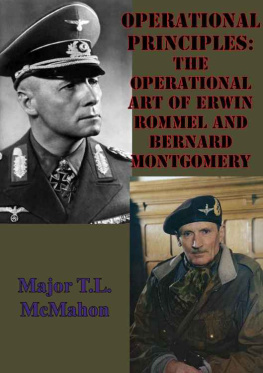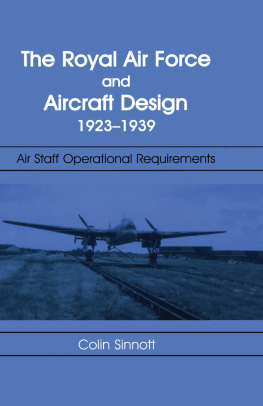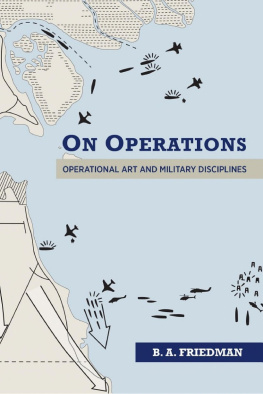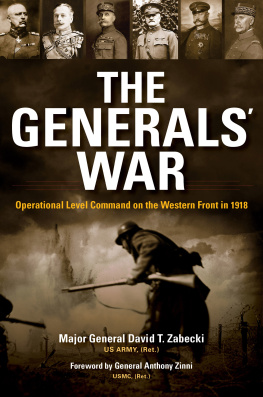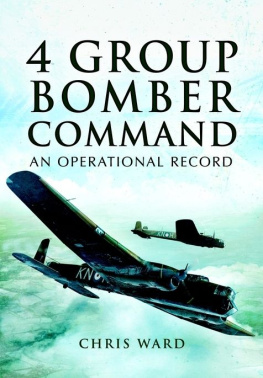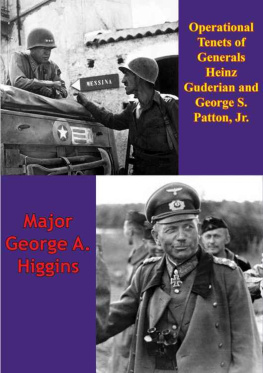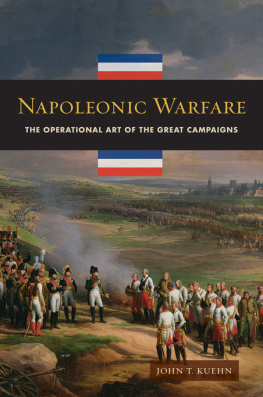I wish to express my gratitude to those who contributed to this study.
To Lieutenant Colonel Doug Johnson, who patiently listened to wild theoretical schemes and encouraged me to make some sense of them.
To Major Roger Cirillo, who filled my arms with books and my head with ideas.
To Doctor Bob Epstein, a stern taskmaster, who sincerely reviewed and critiqued my continuing work.
To Mister Jim Schneider, who threw theories back at me as fast as I could throw theories at him.
Finally, to my wife and son, who gave up more than anyone else so that this study could be completed.
CHAPTER 1 DEFINITION OF THE PROBLEM
Background
The 1982 edition of Field Manual 100-5, Operations , represents an attempt to elevate, qualitatively and quantitatively, the battle perspective of the United States Army. The Field Manual introduces the doctrine of AirLand Battle, acknowledges and defines the operational level of war, and identifies corps and echelons above corps as the principal operational-level planning and executing headquarters. The Field Manual and associated Army publications define the strategic and tactical levels of war, and describe the operational level of war as the physical and intellectual link between the two. Given the new-found prominence (for the US Army, at least) of the operational art, the effort to establish operational-level doctrine is critical and necessary. Field Manual 100-5 and Field Circular 100-15, Corps Operations , have properly introduced that doctrine.
The Preface to Field Manual 100-5 describes the purpose and function of the manual:
FM 100-5 explains how the Army must conduct campaigns and battles in order to win. It describes US Army operational doctrine involving maneuver, firepower, and movement; combined arms warfare; and cooperative actions with sister services and allies. It emphasizes tactical flexibility and speed as well as mission orders, initiative among subordinates, and the spirit of the offense. Specific operational details (techniques and procedures) appear in other field manuals and regulations.
In order to accomplish its stated purpose, the Field Manual describes the US Army and how it fights. The Field Manual introduces, and/or restates and defines combat fundamentals, operational concepts, levels of war, combat imperatives, and the principles of war. The key concepts included in the Field Manual are: establishment of AirLand Battle as the Armys basic operational concept; acknowledgment and definition of the operational level of war; presentation and description of operational concepts and combat imperatives; and the expanded definition and statement of applicability of the principles of war. These concepts, taken together, serve to elevate the battle perspective of the US Army.
While Field Manual 100-5 is intended to be the Armys capstone manual for the conduct of combat operations, Field Circular 100-15, Corps Operations , is a subsidiary publication intending to specify operational details (techniques and procedures) for corps-level combat operations. The purpose of the Field Circular is to provide doctrine for corps operations. It describes how US Army corps are organized and how they fight. The Field Circular promotes the corps as the Armys principal operational-level planning and executing agency, and prescribes how the corps commander and his staff should conduct operational-level campaigns and battles.
The purpose of the foregoing, brief review of the key concepts contained in Field Manual 100-5 and Field Circular 100-15 is to establish a doctrinally current and correct starting point for this study. Those publications represent the whole of the US Armys doctrine pertaining to the operational level of war. In that regard, the review serves to introduce not only US Army operational-level doctrine, but also the shortcomings associated with that doctrine.

